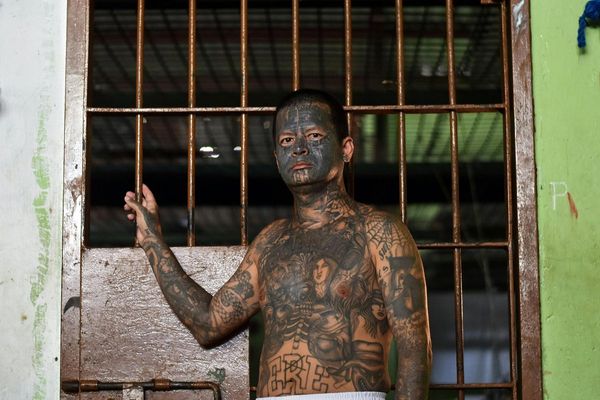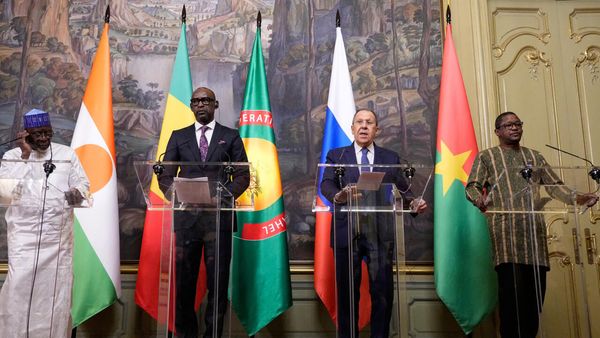
Joya Taylor, an 18-year-old Los Coyotes tribal member, can weave a horse at breakneck speed around a narrow course of metal drums. Those brief, adrenaline-fueled moments of competition involved in a rodeo, when her horse is flying and a single wrong move could mean hitting a 55-gallon barrel, require Taylor and the animal to move as one entity.
“I want both of us to be thinking the same thing,” she said. “I want to move with his body when he moves.”
Taylor, who grew up on the Morongo Band of Mission Indians’ reservation in California, is prepared for this. Before she could walk, she was on a horse.
Being a kid from the reservation wasn’t always easy. “You got other people that look at you different because you’re Native American,” Taylor said. “But [at the rodeo], it’s like this is my one special thing. And everybody out here shares it with me.”
Across the west, the world of Native American rodeo is alive and well – and bringing a sense of old-school cowboy culture into the 21st century. The Indian National Finals Rodeo, which sanctions hundreds of events in the country, recently held its main annual championship in Las Vegas with thousands of attendees.

Smaller regional gatherings on reservations and other venues take place throughout the year. And beyond Native-specific rodeos, Indigenous riders are competing in and winning top events at some of the nation’s biggest competitions. Typical events range from team roping, where two contestants work together to catch a steer, to bull and bronco riding.
On a recent gloomy September morning, at the foot of the San Bernardino mountains in southern California, a group of riders readied their horses for one such event. The scene was familiar: country music was piped in over the speakers, competitors sported wide-brimmed cowboy hats and button-downs, and cattle shifted in their holding pens, waiting for their turn to run.
But this fall rodeo was more than a standard cowboy affair. Events were staged on the Morongo reservation where Taylor is from, a nearly 40,000-acre rural expanse about 20 miles from Palm Springs. Other details spoke to the longstanding heritage of the occasion: bird songs, the ancient music that describes the history of the Cahuilla people, were performed by bird singers. Visitors stood in line to buy Indian tacos, a dish with traditional fry bread as its base and classic taco ingredients piled on top.
Particularly during National Native American Heritage Month, Native rodeos serve as a modern-day reminder of Indigenous cattle ranching history that dates back hundreds of years. Today, some Native American professional riders and ropers, like Erich Rogers of the Navajo Nation, make a living by competing in the expansive rodeo circuit. But for others, like Taylor, the pursuit is more of a part-time passion that adds a sense of community and meaning to their life.
Rogers, the 37-year-old pro roper, said he first got hooked on the sport at age 12, when he won his first trophy saddle at an event. Years later, he became a world champion at the 2017 Wrangler National Finals Rodeo.
“I always wanted to be a professional cowboy,” Rogers said. “This is what I grew up doing.”
Ranching as an ‘economic engine’ for tribes
Often, the 20th-century cinematic version of the stereotypical American cowboy looked like white actors such as John Wayne or Clint Eastwood, squinting heroically into the sun with guns holstered.
Of course, real cowboys of the 18th and 19th centuries – then called vaqueros – spanned many racial identities, including Native American. One California vaquero of the early 20th century even noted in published writings that “when some vaquero had performed his work with great skill, the other men would look at each other, smile approvingly, and say, ‘Se crió entre los indios pues’ – ‘Well, he was brought up among Indians.’”

For Brian Lugo, a Morongo tribal official and rodeo president, that cowboy legacy stretches back generations. When the tribe’s reservation was first formed in 1865, the government gave tribal members an option, he said: become a rancher or a farmer, and you could receive either 20 heifers or 20 fruit trees.
“In an economically depressed area, you have to come up with an engine, and [the federal government] thought farming and ranching would do the trick,” Lugo said from the sidelines of the tribe’s September rodeo.
Still, tribal members faced overt racism and discrimination. Up until the last few decades, Morongo’s cattle were worth pennies on the dollar compared with cattle from other non-Native ranches in the area, Lugo said. And around the time of the reservation’s founding, one 1850s law forced many Indigenous people into servitude if they were deemed not to be gainfully employed.
“As it’s all coming to light it’s getting a little bit easier, but there’s still a difficult road ahead,” Lugo said.

Around the nation, rodeos sprang up naturally from the daily responsibilities involved in cattle ranching; cowboys would casually compete to see who was the best at breaking a horse and who could rope a steer the fastest.
As for the Morongo rodeo, which started 10 years ago, “we needed to show the community what we do and how we were able to create our own economic engine”, Lugo said. Some tribal members are fourth- or fifth-generation cowboys.
Roughly 600 miles to the north-east, Erich Rogers grew up on the Navajo Nation reservation in the 1980s, in a remote corner of Arizona where his house didn’t have running water or electricity until he was a teenager.
Most of Rogers’ relatives were in the world of ranching or rodeo: his grandfather was a brand inspector who worked with livestock, his grandmother raised sheep and cows, and his father competed in local Native rodeos while holding down a full-time job. As Rogers describes it, his childhood – hanging out with family and going to rodeo and livestock events – was “a kid’s dream”.
“It was the thing to do,” he said. “Everybody rodeoed, everybody rode junior bulls and steers and horses.”
At 15 years old, just “young and dumb and roping decently good”, Rogers began partnering in rodeos with a friend who lived off the reservation. Over the next few years they drove around the west, from Arizona to Montana, to compete in Native rodeos for juniors.
Rogers now hits the nationwide rodeo circuit during every season, crisscrossing the country annually to compete in 75 to 80 professional rodeos, plus 15 or 20 Native rodeos. “All I do is drive,” he jokes.

Even after making it to the highest levels of the sport, the next paycheck is never guaranteed. “That’s the hard part about rodeoing,” Rogers said. “You got to do your best every time, and every chance you get to win, so you can get your next week’s bills paid for.”
The initial costs to get into rodeo are also steep: the current price of a horse can hover around $30,000. For those just starting out, having a part-time job to fall back on isn’t a bad idea, Rogers said. When the pandemic hit and rodeos were on pause, Rogers moonlighted as a tow-truck driver for a friend’s company.
Logistics aside, Rogers is adamant in telling Native American youth from his community in Arizona – many of whom he has taught in free roping schools, alongside other professional Navajo ropers – to have faith in themselves.
“Anybody can do it,” he said. “I did it. I didn’t have nothing, and came up, and got it done.”
Getting back to ‘traditional, cultural life’
Not everyone in the Native rodeo world is in it for the competition.
For Taylor, it’s pure fun – an integral part of her community that’s been around for as long as she can remember. The teenager, whose father and other relatives were cattlemen and involved in rodeos, first tried her hand at barrel racing at 14.

“First time stepping into the arena, I was scared,” she said. “Everyone was watching me, just those crazy nerves. After a while it gets better.”
Being a young woman in a traditionally male-dominated sport can be intimidating, too. But stepping up to a rodeo event, “I feel like a badass,” Taylor said, “to just go do some crazy trick on my horse and watch the men be in awe because, ‘Whoa, that’s a little girl dealing with a horse like that.’”
Taylor’s plans for the future aren’t specifically related to rodeo, though her horseback riding experience has been an influence: she’s aiming to graduate with her associate degree in sports medicine in two years, and then hopes to get her bachelor’s in kinesiology. Down the road, she may even shoot for a doctorate in physical therapy.
And the ranching lifestyle that Taylor grew up with will probably never be a distant memory for her. Aside from being involved in the Morongo rodeo, Taylor often rides through the canyons of the reservation, and helps give riding lessons to kids. When she gets older, she expects to have a few more horses and other farm animals.
After all, “this is how it was, this is how it’s supposed to be,” she said. “This is traditional, normal, cultural life.”







